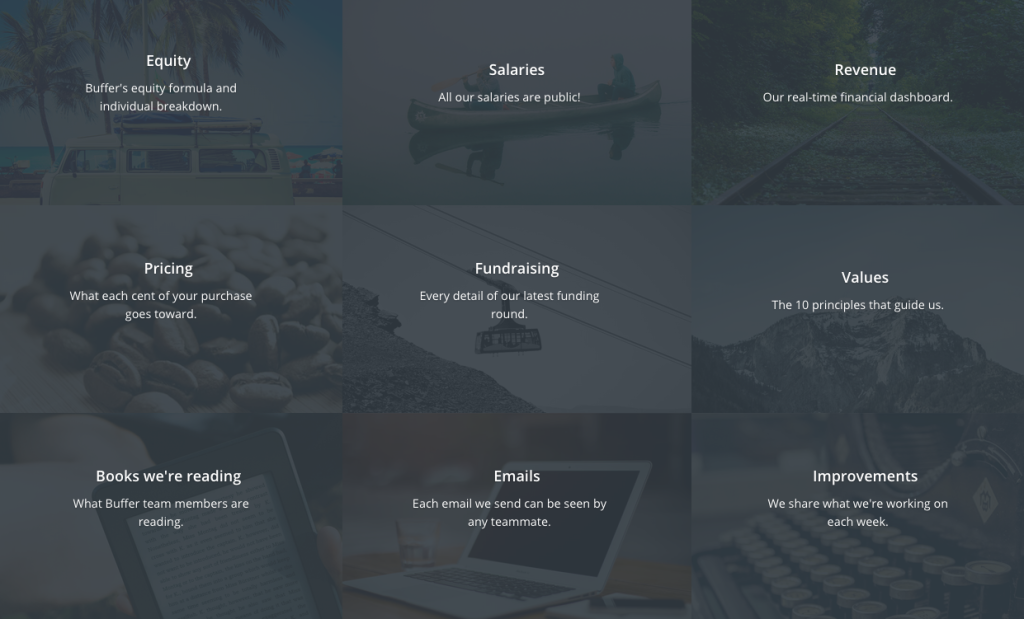Buffer in January: Transparent Feedback, $5.3M Annual Revenue and 30 Teammates

Founder CEO @ Buffer
In January at Buffer, we grew the team, made big progress on upcoming new features, launched a new Transparency Dashboard, and started sharing feedback transparently amongst the team.
Here’s a quick update on what’s been going on:
The latest Buffer metrics
- 2,090,805 total registered users (+4.4%)
- 183,638 monthly active users (+9.0%)
- 44,790 average daily active users (+10.8%)
- $441,108 monthly recurring revenue (+4.6%)
- $5.29m annual revenue run-rate (+4.6%)
- $2,084,935 cash in bank
- 30 team members across the world
- 23 cities, 11 countries, 6 continents (here’s where team members are)
We’ve seen a great pace of growth for MRR/ARR and active users in January. We’re excited at the possibility of starting to approach the $10m ARR milestone by year end.
Team growth: Fastest pace ever
During January we have continued our big push for growing the team and had some good successes. We had 2 people start their Buffer bootcamp and a further 2 people finish the interview process who will start in February.
We’re lucky that we remain profitable, the bank balance and revenues are growing steadily and we are excited to have additional people to help us move faster and who can also experience the freedom and joy of being part of Buffer.
One great aspect of the move towards self-management is that many team members are now becoming involved in the hiring process, which makes it much more scalable for us and is proving to help us grow the team faster while still maintaining our focus on culture-fit.
Product progress on some big new features
January has been a month of great steps forward on some key new features:
- We added one-click sign-up options via Twitter and Facebook directly from the blog.
- We made a lot of discoveries about how successful customers first interact with the product, and as a result have started to work on a new onboarding flow.
- We improved analytics with new post sorting (for paying customers).
And soon we’ll be launching some of these upcoming features:
- Power Scheduler (posting the same article multiple times over many days with different text)
- Calendar View of your scheduled Buffer posts
- Engaging Images product (to help you create a slick image attachment for your posts)
Our brand new transparency dashboard
During January we fully launched our Transparency Dashboard. I think this is especially exciting for us because this isn’t something you can just put together in a couple of weeks.

The dashboard itself only took us that long, but the contents of that page are the result of 3+ years of focus on our culture and transparency.
It’s fun to bring all these elements of transparency in the culture together into a concise page which helps others quickly discover and understand our value of openness.
Spreading Buffer in Asia
As part of embracing being a distributed team, and partially to make my way to Sydney for our 5th Buffer Retreat in smaller steps rather than a very long flight, I chose to travel around Asia during January. I was with Brian for much of the time and a number of other team members have chosen to travel before and after retreat, which is exciting to see.
I spent time in Tokyo, Seoul, Singapore and Jakarta and had a chance to do 3 speaking events, an impromptu Buffer meetup, 2 interviews with publications and several more casual dinners and meetings.

Part of the aim was to spread the word of Buffer in Asia in an attempt to grow the team there, since it is the region where we have fewest team members.
Another result of the time there was that I realized we have a large number of customers in these countries already, and could have even more if Buffer is localized.
As a result, we’ve started a localization task force to work on translating Buffer. I’m excited to see what impact this can have.
Transparent feedback among team members
This month we introduced a new tool into the set of 3rd party products we’re using to run the team. It’s called Small Improvements and we’ve found it has been great to move our praise and feedback away from email to keep it focused and create a place where you feel comfortable and safe, with the awareness that it is where feedback happens.
A big step we made in the last month is to experiment with fully transparent feedback—quite a crazy thought initially for us because I can’t think of any other company that would be fully transparent with all feedback. It’s especially tough to imagine it working when the feedback needs to get more serious and might eventually lead to someone leaving the company.
However, what we found was that so many of the other aspects of our culture rely on transparency, and without that transparency in feedback too, things started to fall apart.
There are some incredible benefits of fully transparent feedback, such as the ability for everyone else to see feedback and add their own perspective, agreeing and emphasizing further or helping to add context and explain something.
This helps us be fully self-managed, because anyone can build on other feedback and say “this is a repeating pattern now, it feels quite serious” rather than it being channeled and limited to a manager.
We are also calling it “FeedForward,” as a slight twist inspired by our friends at Tint, which helps us all keep focused on the feedback being given positively and moving somebody forward.
A small ask
We’d love your help spreading the word about the unique opportunity of working within the Buffer team with our culture of transparency, remote work and self-management. Here’s a pre-written Tweet:
.@buffer is now a 30 person team with no managers & a fully remote setup (+ travel anytime!). How to be part of it: http://jobs.bufferapp.com/
Tweet it or Buffer it
Try Buffer for free
180,000+ creators, small businesses, and marketers use Buffer to grow their audiences every month.
Related Articles

Note: This is the quarterly update sent to Buffer shareholders, with a bit of added information for context. We share these updates transparently as a part of our ‘default to transparency ’ value. See all of our revenue on our public revenue dashboard and see all of our reports and updates here . It's been quite the y

Editor’s Note: Thanks for checking out this post! We’ve released our updated 2021 pay analysis here. You can’t improve something if you don’t know that it needs to be improved. That was very true for us four years ago when we first started looking into equal pay at Buffer. We have long used a salary formula to determine all of our salaries – the same role in the same part of the world receives the same salary. That m

Ever since the world got turned upside down by COVID-19, it’s been “business as unusual” for everyone – Buffer included. I sent this update out to Buffer’s investors one week ago. I hesitated on whether to share it more widely, as I know a lot of companies have been impacted more severely in these times. That said, I believe it makes sense to lean into our company value of transparency, since there may be some companies this could help, and it shows Buffer customers that we will be around beyon